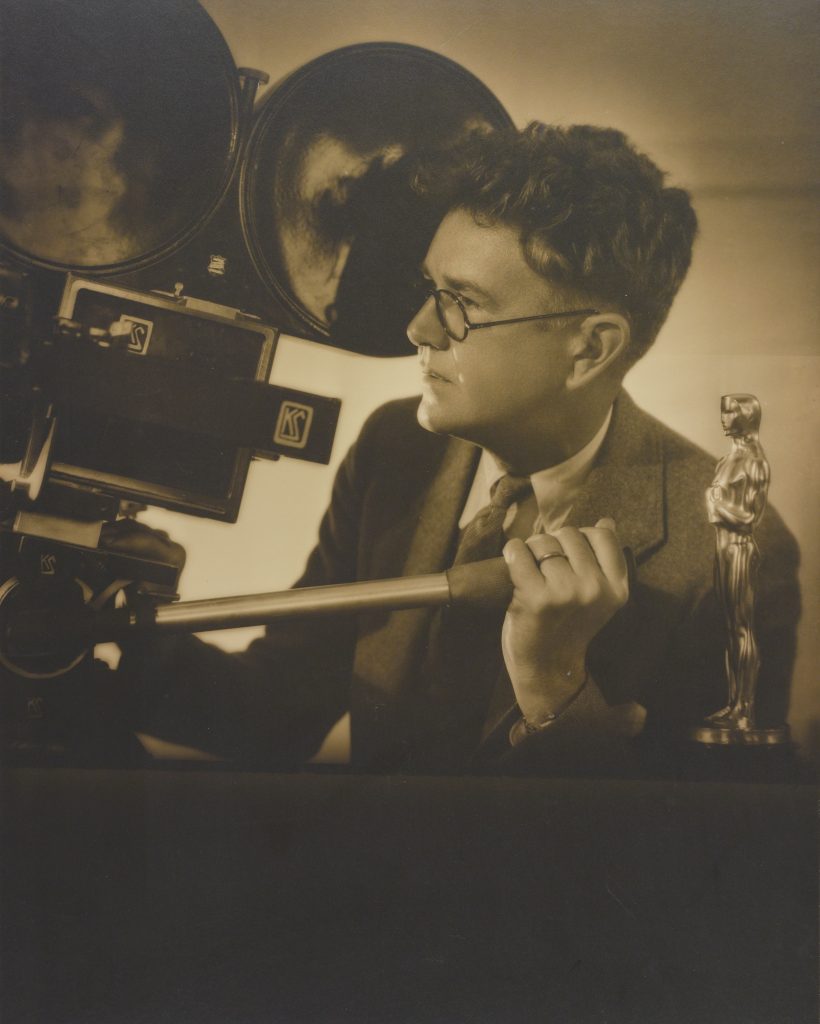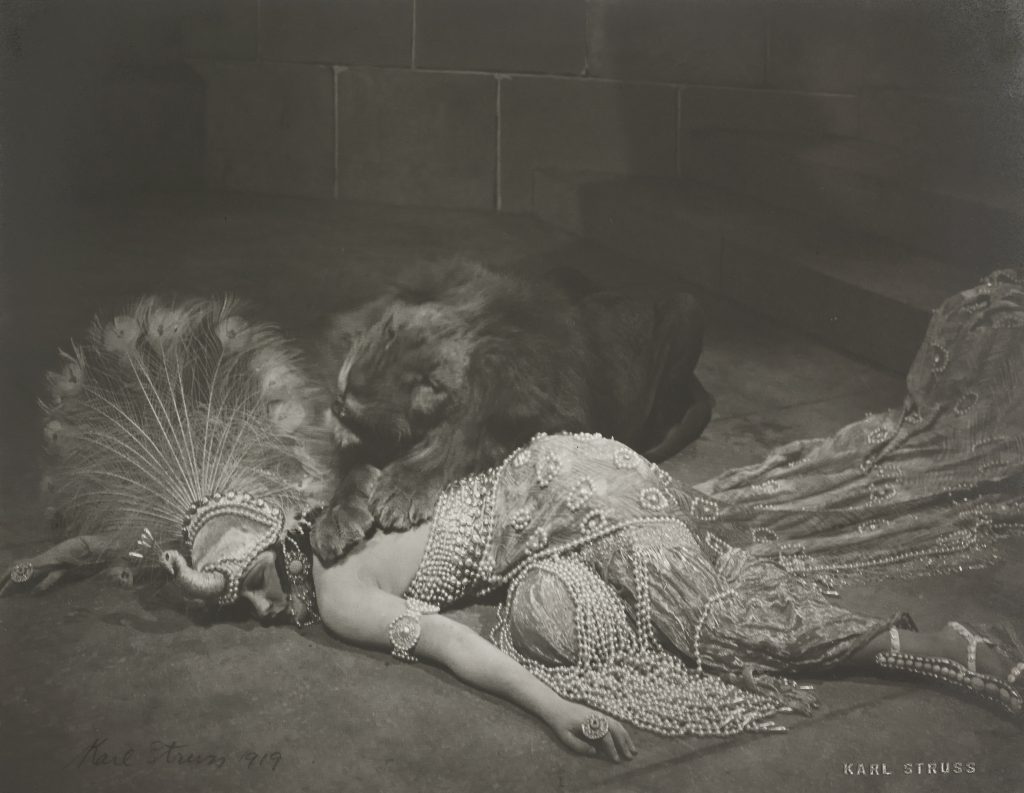Major Karl Struss Retrospective at the Carter
In May 2024, the Amon Carter Museum of American Art (the Carter) mounts a multimedia examination of photographer and cinematographer Karl Struss’s storied career, focusing on his transition from fine art photography to the world of moving pictures.

Featuring archival materials, original film, and over one hundred photographs from the Carter’s extensive Struss Artist Archive and supplemental loans, Moving Pictures: Karl Struss and the Rise of Hollywood spotlights his innovations in image making and contributions to the film industry, closely examining his impact on Hollywood’s Golden Age and the field of cinematography at large. Moving Pictures will be on view at the Carter from May 12 through August 25, 2024.

Kenneth Alexander; Karl Struss with His Cinematography Oscar for the Film ‘Sunrise’; ca. 1929; Gelatin silver print; Amon Carter Museum of American Art, Fort Worth, Texas; P1983.23.185
“Our stewardship of Struss’s Artist Archive speaks to the Carter’s role in preserving and presenting the stories of artists that have shaped the American canon and whose work still echoes throughout contemporary culture,” says Andrew J. Walker, Executive Director at the Carter. “Moving Pictures aims to tell parallel histories—of the burgeoning film industry and of a pioneering artist—which, it posits, are inextricably linked.”
Moving Pictures brings into focus Struss’s unique position as a leader in both still and moving photography, tracing his career from New York—where he was elected to Alfred Stieglitz’s Photo-Secession group in 1910—to Los Angeles, where he moved in 1919 in the wake of World War I, commencing a defining era of his career and joining the wave of westward migration by Americans eager for a fresh start. The exhibition is organized chronologically in four distinct sections to tell the story of his career:
- The opening section surveys Struss’s work as a still photographer—beginning in New York and throughout his early years in Hollywood—featuring his personal fine-art photography, as well as examples of commissioned work that first piqued directors’ and production companies’ interest, including images for publications like Vanity Fair and Picture-Play Magazine, studio portraiture, and commercial images for Kodak.
- The next section explores Struss’s transition to Hollywood and his work as a freelance photographer, taking film stills intended for use in publicity and marketing. In this newfound role, Struss exhibited a keen eye for lighting, drama, and composition,which impressed industry titans like Cecil B. DeMille and expedited his transition to cinematography. It was on the sets of DeMille’s For Better, for Worse (1919) and Male and Female (1919) that Struss was first placed behind a motion picture camera.
- The third section charts Struss’s rapid success as he moved up the ranks to become a co-photographer for big-budget DeMille films like The Affairs of Anatol (1921), Fool’s Paradise (1921), and Forbidden Fruit (1921). While he continued making still images for a few years, by the time he shot Fred Niblo’s Ben-Hur: A Tale of the Christ (1925)—the most expensive and ambitious film of the silent era—Struss had transitioned fully to cinematographer. In the process, he served as a key figure in establishing some of Hollywood’s most important organizations, including as a founding member of the Academy of Motion Picture Arts and Sciences, and deftly navigated an ever-changing industry marked by technological advances, the professionalization of the craft, and the rise of the movie star.
- The fourth section focuses on Struss’s role filming F. W. Murnau’s Sunrise: A Song of Two Humans (1927)—which proved to be not only a critical highpoint in his career but in cinema history, as it is widely considered the peak of the silent film era. This section includes photographs and ephemera from the film, as well as a black box playing Sunrise in its entirety, demonstrating the technical and artistic innovation that earned Struss and Charles Rosher the first Oscar for Best Cinematography from the Academy. Synoptic of his Hollywood legacy, Struss’s original Oscar statue will be on view.
- Finally, the exhibition closes by examining Struss’s post-Sunrise career in the 1930s and 40s, as he adapted to the rise of talkies and the creation of the studio system. His work, including iconic films like Dr. Jekyll and Mr. Hyde (1931) and The Great Dictator (1940), earned him three more Oscar nominations and solidified him as a leading cinematographer of Golden-Age Hollywood. This final chapter showcasesStruss’s adaptability, creativity, and immeasurable impact on the American film industry, which continues to be a dominant cultural force nearly a century later. Reflecting the magnitude of his influence, this final section will include The Cinematographer, a short film created by the Academy in 1951 featuring Struss as the paradigmatic leader of the craft.

Karl Struss (1886-1981)
Gloria Swanson in the Lion’s Den — Fantasy Sequence from “Male and Female”
1919
Gelatin silver print
Amon Carter Museum of American Art, Fort Worth, Texas
P1983.23.171
“This exhibition will highlight the breadth and depth of Struss’s work in both still and moving photography, highlighting the rarity of his creative and technical mastery of both artistic fields,” says the Carter’s Associate Curator of Photographs Kristen Gaylord. “The story behind this presentation is one that only the Carter can tell, made possible by the breadth and depth of our Struss Artist Archive and continuing the Museum’s longstanding tradition of researching, promoting, and interpreting significant American artists whose legacies have been entrusted to our care.”
“Moving Pictures will immerse visitors in the historical context of the period to better understand the reach of the American film industry and the resounding influence of Struss’s legacy,” adds Jonathan Frembling, the Carter’s Head Museum Archivist and Gentling Curator. “The trajectory of his career aligned almost perfectly with the technological innovations and cultural shifts that cultivated the advancement of fine art photography as well as the rise of cinematography as an art form, putting him in the unique position to break ground in both arenas.”
Moving Pictures: Karl Struss and the Rise of Hollywood is organized by the Amon Carter Museum of American Art. The exhibition is supported in part by the Leo Potishman Foundation and the Alice L. Walton Foundation Temporary Exhibitions Endowment.


 Sign in
Sign in

